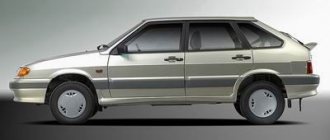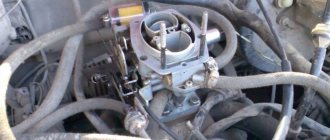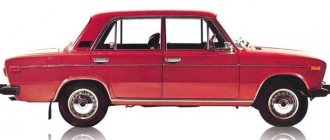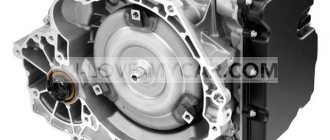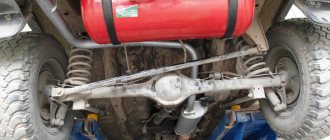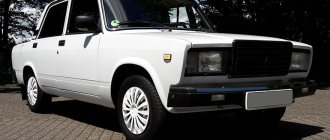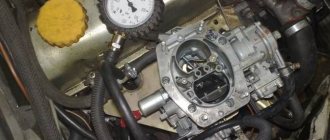Vehicle motion resistance
In cold weather the car rolls worse. The grease in the bearings and gearbox thickens. When driving on a snowy road, the tires have to constantly make their way through the sticky snow. In cold weather, even the density of air increases.
At low temperatures, all factors begin to influence. As a result, the vehicle accelerates worse and retains less inertia.
Special winter lubricants for bearings, gearbox oils and gearboxes are not used in the middle zone for the reason that the replacement period for these products is long. It is expensive to update them before each season; they will not pay off.
As temperatures drop, tire pressure decreases, which leads to increased tire wear and increases fuel consumption. Therefore, with the onset of cold weather, be sure to check the tire pressure and always keep it at the correct value.
Reducing the average speed in the city
The reasons for the increase in fuel consumption in winter are related to changes in traffic conditions. In megacities, the average speed in winter is lower than in summer. With the onset of cold weather, there are no fewer cars in a big city, snowfalls paralyze traffic, cars are even more stuck in traffic jams, either avoiding a traffic jam or waiting for a rescue grader. And all this against the backdrop of accidents here and there blocking traffic. At the same time, fuel consumption increases. A snowdrift that suddenly gets under your wheels can become a serious obstacle - winter conditions are difficult and not always predictable.
There are no significant differences between the seasons on the track. Unless the frosty air thickens and provides more resistance. But this affects high speeds.
From the point of view of fuel consumption, the optimal speed is 70-90 km/h. Further along the speedometer, air resistance becomes too great for economical driving. When the speed increases to 140-150 km/h, the car's appetite can double.
Most common reasons
1. Low beam headlights increase consumption by 5%, high beam - by 10%. According to current rules, every motorist must constantly drive during the day with the low beams on, and this does not help save gasoline. The solution is to use special LED running lights. They use less power and last longer than regular light bulbs.
2. The coolant temperature is below the calculated one, i.e. The engine does not warm up to operating temperature. This is especially true in winter. The solution will be to insulate the hood and engine using special materials such as a car blanket or felt.
3. An automatic transmission increases fuel consumption compared to a manual transmission. It is worth noting that a new generation of automatic transmissions has appeared that do not increase consumption, but on the contrary can reduce it compared to a manual transmission.
4. Use of low-octane gasoline. If the manufacturer provides AI-95 gasoline, and you refuel with 92, then consumption will increase to 20%, which will not justify the difference in price. Changing the brand of gasoline to high-octane (fill in 95 instead of 92) helps save fuel. True, gasoline itself will cost more.
5. Overtightened wheel hub bearings (poor rolling). You can check the car's roll yourself. To do this, accelerate and put the car in neutral gear, do not brake. And the path covered from releasing the gas pedal to its complete stop (without using the brakes) is called coasting.
The better the roll, the less resistance to the movement of the machine. If the suspension parts are not in perfect condition, then the roll-up may increase and, accordingly, increase fuel consumption.
6. Unadjusted wheel alignment. Twice a year you need to adjust the wheel alignment of your car. Typically, this is done when changing tires from summer to winter, and vice versa. If you do not do this, the tires may align incorrectly (look in different directions), and this will increase fuel consumption. Sports camber also does not help save gasoline.
7. Every 100 kg of cargo increases fuel consumption by 10%. Loaded roof rack - 40%, empty - 5%. Trailer - by 60% (which affects the aerodynamics of the car). If you loaded a car full of cargo, then be prepared for increased consumption.
8. Untimely replacement of the air filter (recommended frequency - every 10-15 thousand km). Over time, the filter becomes dirty and allows less air to pass through, which means that gasoline consumption will increase by up to 10%. The use of zero-resistance air filters also negatively affects the amount of gasoline in the car’s tank.
9. Increased wear of the engine cylinder-piston group. This happens when the timing mechanism is worn out, and also when the engine valves are not adjusted.
10. Incorrectly set gaps in spark plugs and interruptions in operation. Monitor the condition of the spark plugs and change them periodically. If the spark plugs work intermittently, this will affect the operation of the engine, which will not operate at optimal speed. Which will lead to increased fuel consumption.
In which case will fuel consumption be higher?
There is also an opposite opinion, which says that when the engine is restarted, the instantaneous fuel consumption will be large, therefore it is irrational to turn off and restart. This is true, but only as regards the first 5–10 seconds of engine operation. Then you start losing milliliters after milliliters. Thus, if the car runs for more than 10 seconds, it begins to consume more than if you turn off the ignition, and, if necessary, turn it on again. That’s why I wrote above about experienced drivers and the habits they developed over the course of their experience.
see also
Comments 16
How did you measure it? From a separate canister?
I haven’t measured it yet, stupidly the tank flies away very quickly and that’s it)
Well, then why write a priori a lie?) I understand if you separately measured from a canister how much it eats. Otherwise, start asking now, and as usual it will turn out “yes, I run the engine on the choke for 15 minutes, and then I drive a couple of kilometers in total,” and so on and so forth. In general, it is complete nonsense to suspect the stove is running out of fuel in winter. It's all about poor operation. Because of this, stories about the stove appear.
Well, it’s a lie, I drove for half the winter without a stove, the consumption was increased due to warming up, etc., but as soon as I repaired the stove and drove with it, two tanks instantly flew away, I didn’t even really drive. So I ask, maybe she’s not configured somehow.
I already wrote a long comment, but just now I saw this one - verdict 100% - THE NEEDLE OF THE FLOAT CHAMBER OF THE OVEN CARB DOES NOT HOLD
Well, it’s a lie, I drove for half the winter without a stove, the consumption was increased due to warming up, etc., but as soon as I repaired the stove and drove with it, two tanks instantly flew away, I didn’t even really drive. So I ask, maybe she’s not configured somehow.
It's clear then. But anyway, I would take a separate tank, bottle, canister, it doesn’t matter) and measure the stove separately. Then it would be possible to draw conclusions. Well, Nikolai has already written everything to you.
Yes, by the way, when you connect the stove to a separate line, the old one from the tank must be turned off. Otherwise, if there is a lot of gasoline in the tank (half or more), then it flows from there by gravity.
Well, then why write a priori a lie?) I understand if you separately measured from a canister how much it eats. Otherwise, start asking now, and as usual it will turn out “yes, I run the engine on the choke for 15 minutes, and then I drive a couple of kilometers in total,” and so on and so forth. In general, it is complete nonsense to suspect the stove is running out of fuel in winter. It's all about poor operation. Because of this, stories about the stove appear.
don’t be so fussy - this can really happen - only you see the author initially did not give out all the information in the question - he did not say that he had repaired the stove before and did not say by what signs he concluded that the stove was eating (comparatively what) in short, after the repair the needle simply did not hold carb float chamber
Well, of course) I just had to lay it all out right away) It’s strange that he didn’t notice that the pump was constantly pumping, or that the gasoline smelled very good. At one time I did a transfer into a separate bottle just in case) and then for some reason I removed the hose altogether, it seemed that it had frozen somehow and the stove stopped working, well, while I was looking for what was wrong, I was completely freaked out and when I found it, then I threw it away altogether))
no one is sinless))
Thanks guys for the constructiveness!
I didn't repair it, I just changed the spark plug and it started working. What can you do with a needle?
So, did you check that the gasoline is escaping through the funnel?
When I go out, I’ll see that the frost has just ended!
What do you mean it's burning gas? what is the consumption per hour when the engine is running at X/X? Is the stove smoking? Is there hot or not very warm air coming into the cabin?
It does not smoke, hot air flows into the cabin. The 30 liter tank flew away and drove about 100 km with the stove, plus warming up, etc.
this is not a measurement of the consumption of the stove; it is impossible to talk about the consumption of the stove if it is together with the engine on the same tank, usually the line from the EBN is disconnected and a bottle or canister is attached to the EBN and the operating time of the stove is recorded during which the volume of gasoline runs out - and knowing how many liters per hour the stove consumes you can something to speculate on BUT... I seem to know what the problem is - your gasoline just flew off onto the road because the needle of the carb's float chamber does not hold and there is an overflow hose with the carb - it goes from the carb to the funnel and from the funnel under the wing - that's if the funnel wet when the stove is operating (turn on the stove and check if the funnel is wet with gasoline) then your float chamber needle does not hold (or the level is too high)
Skinny people pay less
The news published a month ago on Motor about the impact of American obesity on fuel efficiency made us think: how much does fuel consumption increase depending on the increase in vehicle weight? We decided to test this using the Hyundai Solaris as an example.
Discuss Photo by Vlad Klepach and the author
The news published a month ago on Motor about the impact of American obesity on fuel efficiency got us thinking: how much does fuel consumption actually increase depending on changes in vehicle weight? We decided to test this using the example of the most popular foreign car in Russia – Hyundai Solaris.
Let us recall the background: American researchers found out some time ago that despite the development of technology and the improvement in the efficiency and fuel economy of internal combustion engines, any noticeable reduction in fuel consumption on a global scale has not yet been observed. It turns out that the problem lies in the fact that Americans are becoming fatter, and therefore heavier. Experts have found that a 1 pound (0.45 kilogram) increase in the average vehicle occupant weight in the United States results in a 39 million gallon (147.5 million liter) increase in fuel consumption nationwide per year! It's a lot.
The weight of a car is a very important characteristic that affects not only the dynamics, but also the “appetite” of any car.
The more the car is loaded, the more gasoline it will use. But the question is: how much more? We decided to look into this.
For our test, we chose the best-selling foreign car in Russia - the Hyundai Solaris sedan, in the most popular modification with a 123-horsepower 1.6 gasoline engine and a four-speed automatic transmission.
We filled the tank “under the plug” using a canister and a “funnel”. Every 100 kilometers, data from the on-board computer was taken, and their correctness was checked by adding fuel from a special measuring container. The amount of gasoline added to the tank made it possible to determine the actual consumption.
Our experiment took place along a test route exactly 100 kilometers long. About half of its distance was federal highways with two lanes in each direction. Another 40 kilometers are “two-lane” local roads with frequent overtaking trucks and two railway crossings along the way. The remaining 20 kilometers had to be driven through two cities near Moscow. The traffic here is quite intense, with frequent braking and acceleration at traffic lights or pedestrian crossings, and sometimes you had to stand in small traffic jams.
During the experiment, the same driver was behind the wheel, moving at a normal pace in compliance with all traffic rules and speed limits in force on certain sections of the highway. True, in the case of overtaking on the highway, he was allowed to exceed the established speed limit by 20 kilometers per hour to complete the maneuver.
How we calculated the maximum carrying capacity: the curb weight of the Hyundai Solaris (filled car plus driver) is 1198 kilograms, and the total permissible weight is 1565 kilograms. The maximum load capacity is determined by simple subtraction: 1565 – 1198
367 kilograms. To simulate a full load, we used ballast: 75 kilograms each in the remaining four seats (300 kilograms) plus 50 kilograms in the luggage compartment. Another 17 kilograms came from a canister partially filled with gasoline.


